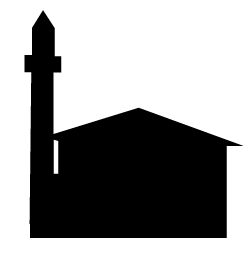Beghleti
Beghleti Mosque
Originally a small mosque typical of the late nineteenth century, Beghleti has recently acquired several additions to support its growing role as a regional educational center. Artists’ carvings date the interior decoration to a 1926 renovation—five years after the Red Army’s arrival in Georgia. Although Bolshevik authorities instituted state atheism in 1921, Upper Adjara’s Muslim communities fought secularization—rejecting campaigns to close madrasas and ban womens’ veils—until as late as 1929. Beghleti’s original craftsmen remain unknown, but striking similarities between the early twentieth century murals at Beghleti and Dghvani suggest the hands of Laz masters Omer Usta and Usta Bin Ahmed. Distinctive paintings found at both mosques include folded red scarves, lemon trees, flower vases, and a bi-colored chevron pattern wrapping around the ground floor. The mihrabs of both mosques are painted dark green with a gold-accented floral bouquet inside the niche. Perhaps the most unusual motif (found along the base of the mihrab wall and the ceiling medallion’s frame) is a dynamic “bubble” pattern, outlined in blue on a background of pink or white. Unique to Beghleti is the mural to the left of the mihrab, which depicts a standard with three Turkish flags. The white crescents on the flags—although defaced during the Soviet period—are still partially visible. While the mosque’s most dramatic decor dates to the early twentieth century, several remnants of earlier carved ornament suggest a considerably older base structure. Unlike later mosques built with domes, Beghleti has a carved ceiling medallion. Columns with traditional hooks and geometric carvings on the ground floor contrast with the European-influenced doric columns of the mezzanine level. Tiered bands of carved ornament—knots, incised triangles, braids—form a cornice partially concealed by the newer mihrab.
DISTRICT: Khulo
LOCATION: 41°38'59.2"N 42°18'41.4"E
POPULATION: 578
CONSTRUCTION DATE: 1870-1900
RENOVATION DATE(S): 1926 (hijri 1344); 1990s
CRAFTSMEN: unknown; decorated by Omer Usta, Usta Bin Ahmed (Laz)
MINARET: Yes

